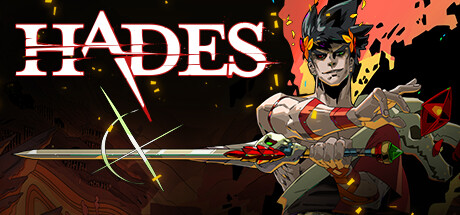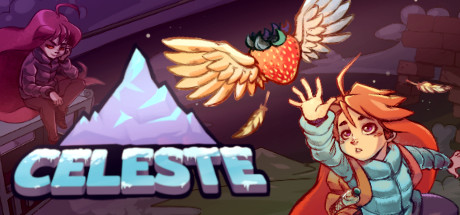Indie games are “the heat” and have been for quite some time, and the industry is no longer a niche player’s haven. In fact, in 2024, the indie game industry stands at the forefront of innovation, creativity, and growth within the greater realm of gaming. For indie game developers, gamers, and tech innovators, a robust understanding of the ever-evolving trends in the indie game industry is crucial.
In this, our first article at Indie Game Launch, we will break down the current state of the indie game world, highlight some emerging trends, and give you some practical advice for thriving in this amazing field!
The State of the Indie Game Industry in 2024
Indie games have grown monumentally over the past ten years. What used to be a tiny fragment of the greater gaming industry has today become a major force to be reckoned with. Big player platforms such as Steam, Nintendo Switch and even mobile app stores have paved the way for indie developers to showcase their creative talents to a global audience.
But what about revenue, you might ask? Well, revenue generated by indie games has seen a notable uptick, thanks to the ever increasing support from crowdfunding platforms and indie game festivals. In 2024, indie games are no longer merely competing with AAA titles, but instead are often setting the trends and pushing the boundaries of what gaming can be.
The surge in popularity is also bolstered by an increasing influence of indie games on that of mainstream gaming. Today, many indie developers are exploring unique narrative structures, innovative gameplay mechanics, and experimental (and stunning) art styles, leading to the larger game studios to rethink their approaches.
Current Trends Shaping Indie Games
Let’s dive into some of the current trends shaping the indie game world. These trends do not only reflect the changing preferences of gamers, but also highlight the innovative approaches that many indie game developers are embracing. From the rise of narrative-driven experiences to the integration of new technologies, each of these trends present unique opportunities and challenges for developers seeking to make their mark in the competitive arena that is gaming. (Excuse the pun)
Technological Advancements
Advances in technology have made game development more accessible than ever. Renowned tools like Unity and Unreal Engine have democratised the creation process, allowing developers from all walks of life, including those with limited resources to produce indie games of high calibre. Then we have cloud gaming, which has led to a reduction in hardware barriers, giving gamers the ability to enjoy their favourite indie titles on several different devices.
Then there’s also the advancements in artificial intelligence (AI) and machine learning (ML) which have become integral to game development. These evolving technologies can help in the creation of more responsive NPCs and procedurally generated environments, enhancing the gamers’ immersive experiences. Not to mention, but many developers are using AI for specific tasks including debugging and optimising performance, leaving plenty of time for the thing that truly matters, creativity.
Lastly, there’s also been the advent and growth of cross-platform gaming. Today, many players, including us here at Indie Game Launch, expect seamless gaming experiences across different platforms such as PC, console and even mobile. Indie game developers are meeting this demand with many titles ensuring that a unified experience is achieved across all platforms.
Market Strategies
Technological advancements are not the only trend found with indie games today, marketing and monetisation strategies for developers are also evolving. Social media and influencer partnerships have proved effective time and time again for spreading the word about new titles. Community engagement is also at an all-time high, with many developers stepping up and participating in forums and AMAs, Discord servers, and livestreams to build loyal fanbases.
Then there are the big names, Xbox Games pass and Playstation Plus who both provide indie games with broader exposure. These subscription based platforms allow gamers to explore a myriad of titles for an affordable monthly fee, opening the door for indie games to reach audiences, who might not have even discovered them otherwise.
Lastly, crowdfunding remains a vital lifeline for many indie projects, and platforms such as Kickstarter and Patreon have helped many developers secure the financial backing they need to bring their indie games to life. Successful campaigns often rely on transparent communication and regular community updates, which fosters a sense of investment and connection among those who have backed a project.
Player Expectations
It's no secret that today gamers expect more than just good graphics or gameplay. Instead, us entitled gamers crave meaningful experiences from every game. Believe it or not COD players, most of us want story-driven games with emotional depth and relatable characters. It’s here where indie developers excel, often crafting narratives that resonate deeply with players.
Inclusivity and representation are also becoming non-negotiable. Gamers want to see themselves reflected in the games they plan, and indie developers are leading the charge by creating diverse characters and storylines. Of course, this trend is not only socially responsible but also further broadens the appeal of indie titles.
Future Trends To Watch
AR and VR technologies have already entered the fray and will continue to revolutionise the gaming industry, including the indie sector. These immersive technologies offer players new ways for them to interact with game worlds, opening up endless possibilities for more creative storytelling and immersive gameplay experiences.
Indie developers are uniquely positioned to experiment with AR and VR due to them commonly having smaller team sizes and agility. By integrating these technologies, these developers can craft gaming experiences that are not only innovative but also deeply engaging. We expect to see more indie titles that push the limits of what’s possible when utilising AR and VR.
Lastly, the cost of AR and VR hardware is also decreasing, which will make these experiences more accessible to a larger audience and the democratisation of technology will more than likely usher in a new wave of indie games that use AR and VR in groundbreaking ways.
Advanced AI in Game Development
Let’s not forget AI’s role in game development. This technology is poised to expand game development even further beyond NPC behaviour and procedural generation, as AI will be able to assist in crafting dynamic storylines that adapt to player choices, offering personalised gaming experience from one gamer to the next.
Machine learning algorithms can also analyse player data to optimise gameplay mechanics and difficulty levels in real-time. This adaptive approach will ensure that games remain challenging while also enjoyable, ultimately catering to a wide range of player skills and preferences.
Lastly, AI-driven analytics might also provide developers with deeper insights into player behaviour, and this data will help inform future updates and patches, ensuring that games evolve based on actual player feedback and engagement. (As opposed to developers nerfing things in-game and pissing off their communities, we’re looking at you Helldivers 2)
Evolving Game Themes and Narratives
It’s no secret today that indie games are lauded for their innovative and often unconventional themes. In 2024 and beyond we expect to see more titles that tackle complex socio-issues, games that offer introspective narratives, and explore more abstract concepts.
Environmental sustainability, mental health, and social justice are themes gaining traction. Games that address these issues can offer players a sense of purpose and connection, making the gaming experience more meaningful.
Experimental storytelling techniques, such as non-linear narratives and multiple endings, will continue to thrive. These approaches give players more agency and can lead to highly personalised experiences. Indie developers will likely explore hybrid genres, blending elements from different game types to create unique and compelling stories.
Case Studies of Successful Indie Games
"Hades" by Supergiant Games

"Hades" serves as a standout example of an indie game that has attained both critical acclaim and commercial success. By melding rogue-like elements with a compelling narrative and impressive art, Supergiant Games has delivered an experience that deeply resonates with players. The game's triumph highlights the potential of combining inventive gameplay with captivating storytelling.
"Among Us" by InnerSloth

"Among Us" captured the gaming world's imagination with its uncomplicated yet captivating gameplay. The game's triumph can be traced to its social interactions and inclusivity. It blossomed into a cultural sensation, demonstrating that indie games can attain widespread acclaim through original ideas and organic promotion.
"Celeste" by Maddy Makes Games Inc.

"Celeste" is renowned for its challenging platforming and powerful narrative. The game's exploration of mental health themes deeply connected with players, showcasing the importance of addressing real-world issues with care and empathy. Its success underscores the ability of indie games to provide both entertainment and impactful experiences.
Advice for Indie Game Developers
Innovate Fearlessly
Innovation is the heartbeat of indie game development. Embrace the opportunity to explore new ideas, mechanics, and narratives. The indie game community thrives on creativity and uniqueness, so dare to take chances and challenge the norm. Your distinct vision might just become the next major success.
Build and Engage Your Community
Building a strong community is crucial for the success of any indie game. Engage with your audience through social media, forums, and live streams. Listen to their feedback and involve them in the development process. Building a loyal fanbase ensures long-term support and can help spread the word about your game.
Leverage Marketing Strategies
Implementing effective marketing strategies is essential to reaching a wider audience. Use social media, engage in influencer partnerships, and leverage crowdfunding platforms to create excitement around your game. Produce engaging content like behind-the-scenes videos and developer diaries to keep your audience engaged in the development process.
Closing Thoughts
In 2024, the future of indie games will shine with promise and abundant opportunities. By embracing industry trends, nurturing creativity, and captivating players worldwide, indie game developers can continue to push boundaries and inspire. Remember to prioritise community engagement, fearless innovation, and impactful marketing as you journey through this dynamic landscape.
